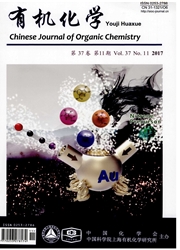

 中文摘要:
中文摘要:
乙酰胆碱具有重要的生理活性,其跨膜输送是实现神经信号传递的重要过程之一.利用人工合成体系来模拟乙酰胆碱的跨膜输送过程不仅具有重要的理论研究价值,而且还具有生物医用前景.目前,由于缺乏合适尺寸大小的骨架,构筑具有跨膜输送乙酰胆碱功能的人工通道还具有较大的挑战性.利用含有Phe三肽的芳香酰肼大环化合物在脂双层中构筑了人工跨膜通道,通过基于囊泡的动态荧光光谱实验以及基于平面脂双层的膜片钳实验证实,这类人工通道可以跨膜输送乙酰胆碱.可以发现,通道对乙酰胆碱的选择性随着通道孔穴尺寸的增加而增加.
 英文摘要:
英文摘要:
In natural system, the transmembrane transport of actylcholine is one of the important processes for realizing the neural signal transduction, which relies on some specific proteins. The development of artificial systems displaying the similar transport capability is not only fundamentally important but also may find potential biological and medical applications. However, this has been a challenge because of lacking architectures with proper cavity size for passing of actylcholine. In this paper, the artificial channels have been built from the Phe tripeptide attached to aromatic hydrazide macrocycles. Dynamic fluorescent experiments on lipid vesicles and patch clamp experiments on planar lipid bilayer revealed that the channels can transport actylcholine. The transport selectivity was found to increase with the increasing cavity size of the macrocycles.
 同期刊论文项目
同期刊论文项目
 同项目期刊论文
同项目期刊论文
 期刊信息
期刊信息
